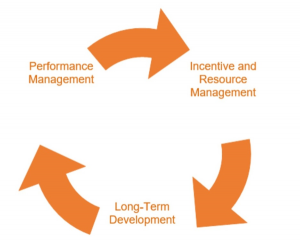— February 27, 2018

Pixabay
Mere weeks ago, Google announced a fairly major shake-up to the status quo. Meta descriptions, which have long been limited to 160 characters, can now be up to 320 characters—effectively doubling the size of this crucial online real estate.
What are Meta Descriptions, and Why Do They Matter?
If you’re not sure what a meta description is, conduct a Google search right now. In the search results page, you’ll see a list of 10 (or so) blue links—i.e. your search results. Beneath each link you’ll see a brief blurb, summarizing what the content is about. That, basically, is the meta description.
Your meta descriptions matter because they provide Google with a sense of what your content is about—and, they offer search engine users with a sneak peek, helping them decide whether or not they want to click on your link.
“Meta descriptions play a big role in search results,” HubSpot notes. “The end goal is to convince and persuade the searcher to click through to your website. Any words that match the search term are bolded in the description.”
What to Do with Longer Meta Descriptions
Hopefully, you can see why meta descriptions are so meaningful—but the question remains: What are marketers supposed to do with all this extra space at their disposal?
Your first instinct might be to say that this is a boon for content writers and SEOs, who now have twice as much space to insert keywords, to offer a content synopsis, and to entice users to click through to their page. And that’s true, but it can also be a double-edged sword.
Consider it this way: Meta descriptions were initially developed to provide a short, snappy summary of your content, aimed at search engine users. That hasn’t changed. And while having 320 characters may help you develop a more compelling summary in some cases, there are just as many instances where less is more.
In fact, there’s an argument to be made that longer meta descriptions do more harm than good. Given that most searches now happen on mobile devices, where users aren’t as keen to do a lot of reading, brevity is generally best. Getting right to the point, with a pithy meta description, may actually be more beneficial than testing your reader’s patience with the full 320.
Meta Descriptions: A Case Study
Imagine this scenario: You’ve conducted a Google search for content writing services, and you’ve found Grammar Chic’s content writing services page. Which of the following two meta descriptions would make you more likely to click the link?
Discover the value of outsourcing your content writing needs to a company like Grammar Chic! Arrange a consultation with a content writing professional today!
OR…
Content writing services can help you keep up with the demands of regular content creation, while also freeing your time to focus on other areas of your business. Learn more about the content writing services of Grammar Chic, which include social media, blogging, press releases, website content, and more!
Now, there’s nothing necessarily wrong with either of these meta descriptions—but it’s hard to deny that the first one is a little punchier, a little more straight-to-the-point, a little more likely to command your attention and result in a click.
Let that be a lesson: In writing meta descriptions, you’ve now got more room to maneuver than ever before—but that doesn’t always mean you should take it.
Digital & Social Articles on Business 2 Community
(49)




